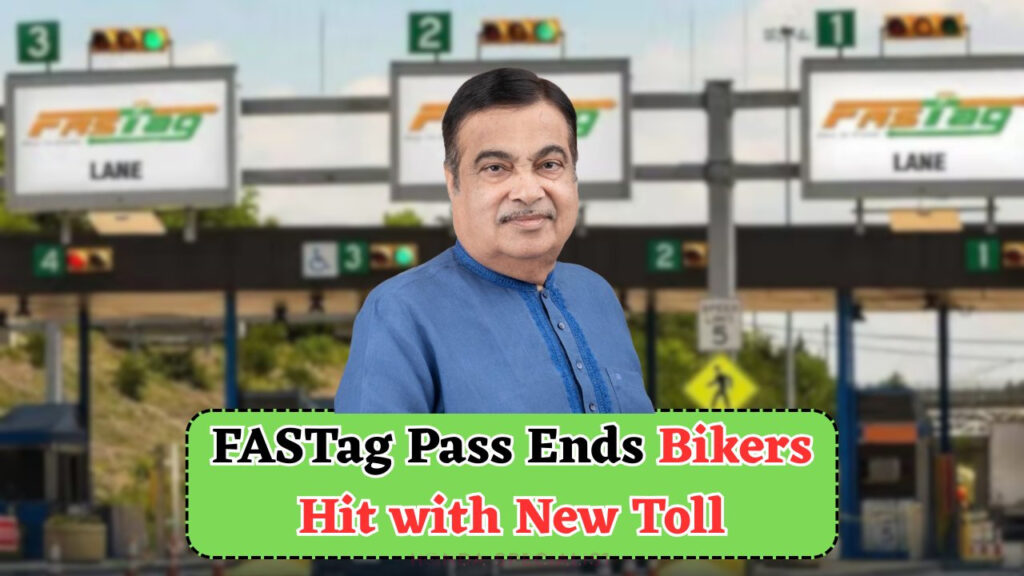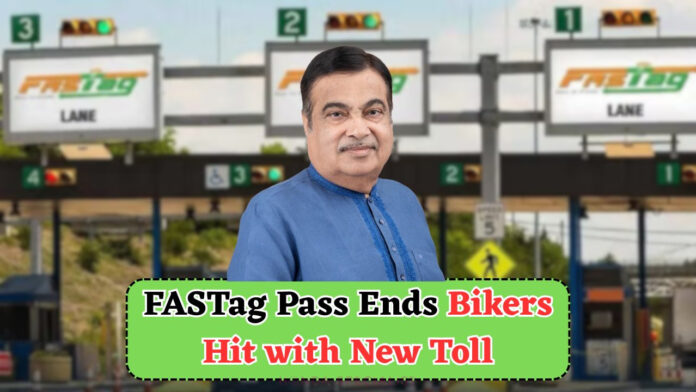
FASTag Free Pass Ends: Starting July 15, Two-Wheelers Face Toll Charges at Entry Points
FASTag Free Pass Ends for Two-Wheelers from July 15
Starting July 15, two-wheelers in India will no longer be exempt from paying tolls at highway entry points. This marks a major change in the existing toll system, which has traditionally allowed bikes to pass freely. The new rule introduces toll charges for two-wheelers to help streamline toll collection and boost infrastructure funding.
How This Will Affect Two-Wheeler Users
Charging tolls on bikes is expected to bring several changes. For daily riders who depend on two-wheelers for short trips, this will likely lead to higher commuting costs. The added financial burden may also impact the sale of motorcycles and scooters by increasing overall ownership costs. On the other hand, the move is expected to support better road upkeep and fund infrastructure improvements through the additional revenue collected.
- Additional daily expenses for two-wheeler commuters
- Potential impact on two-wheeler sales
- Improved road maintenance and infrastructure
- Increased focus on public transportation options
How FASTag Implementation Will Work for Two-Wheelers
The implementation of FASTag for two-wheelers will involve the installation of electronic toll collection systems on highways. Two-wheeler owners will need to purchase and affix a FASTag on their vehicles. This tag will be linked to their bank account, allowing automatic deduction of toll charges as they pass through entry points. The system aims to reduce congestion at toll plazas, as it eliminates the need for cash transactions.
While initially there could be a learning curve for riders unfamiliar with the FASTag system, the long-term benefits of reduced wait times at toll booths and seamless travel are expected to outweigh the initial challenges. Highway authorities are also expected to conduct awareness campaigns to educate the public about the changes and facilitate a smooth transition.
- Installation of electronic toll systems at entry points
- Requirement for two-wheeler owners to purchase FASTag
- Automatic toll deduction linked to bank accounts
- Awareness campaigns for public education
- Potential reduction in congestion at toll plazas
Comparing Toll Charges Across Vehicle Types
The toll charges for two-wheelers are expected to be lower than those for larger vehicles, given their lesser impact on road wear and tear. However, the exact toll rates will vary depending on the highway and the distance traveled. The following table provides a comparison of expected toll charges across different vehicle types:
| Vehicle Type | Short Distance | Medium Distance | Long Distance | Average Daily Commuter Cost | Monthly Commuter Cost |
|---|---|---|---|---|---|
| Two-Wheelers | ₹10 | ₹20 | ₹30 | ₹15 | ₹450 |
| Cars | ₹30 | ₹60 | ₹90 | ₹60 | ₹1800 |
| Buses | ₹50 | ₹100 | ₹150 | ₹100 | ₹3000 |
| Trucks | ₹70 | ₹140 | ₹200 | ₹140 | ₹4200 |
Rationale Behind FASTag Charges for Two-Wheelers
The decision to implement toll charges for two-wheelers comes from a need to maintain and upgrade highway infrastructure efficiently. With the increasing number of vehicles on the road, the strain on road maintenance budgets has grown. By bringing two-wheelers into the toll collection system, authorities aim to generate additional revenue that can be reinvested in road quality and safety measures.
Moreover, with the FASTag system’s introduction for two-wheelers, the government is striving for a unified toll collection system that is fair and efficient. This move is also expected to reduce the disparity in toll charges between different vehicle types and ensure that all road users contribute proportionately to the infrastructure they utilize.
- Additional revenue for road maintenance and upgrades
- Unified toll collection system
- Fair contribution from all road users
- Reduced disparity in vehicle toll charges
Challenges in Implementing FASTag for Two-Wheelers
Implementing the FASTag system for two-wheelers will not be without its challenges. One of the primary concerns is ensuring that the FASTag is easily accessible and affordable for all two-wheeler owners. Additionally, there might be resistance from certain segments of the population who are unaccustomed to digital payment systems.
To address these challenges, authorities will need to ensure widespread availability of FASTags and possibly subsidize costs for low-income users. Efforts to enhance digital literacy among the general public will also be crucial in ensuring the smooth integration of two-wheelers into the FASTag system.
- Ensuring affordability and accessibility of FASTags
- Resistance to digital payment systems
- Need for enhanced digital literacy
- Potential subsidies for low-income users
Future Prospects for Two-Wheeler Commuters
Looking forward, the introduction of toll charges for two-wheelers under the FASTag system is likely to encourage a shift towards more sustainable transportation options. As the cost of two-wheeler commutes rises, more people might consider carpooling or using public transportation for their daily travel needs.
This shift could also lead to an increased focus on electric two-wheelers, as manufacturers and consumers look for cost-effective and environmentally friendly alternatives. Electric vehicles, exempt from certain toll charges, might become more attractive options for daily commuters.
| Transportation Mode | Prospects |
|---|---|
| Carpooling | Reduced travel costs |
| Public Transportation | Increased usage and investment |
| Electric Two-Wheelers | Exempt from certain tolls, environmentally friendly |
| Traditional Two-Wheelers | Potentially higher costs, decreased sales |
| Alternative Transport | Growth in bicycle and pedestrian infrastructure |
Expert Opinions on FASTag Charges for Two-Wheelers
Rajesh Kumar, Transport Analyst:
“The inclusion of two-wheelers in the FASTag system is a necessary step towards equitable toll collection. It ensures that all road users contribute to the maintenance of the infrastructure they utilize.”
Anita Deshmukh, Urban Planner:
“While the transition might be challenging initially, the long-term benefits of improved road infrastructure and reduced congestion at toll points cannot be overstated.”
Vikram Singh, Environmental Advocate:
“This change could be an impetus for the adoption of electric vehicles, which are not only cost-effective in the long run but also better for the environment.”
Maya Rao, Daily Commuter:
“As someone who relies on my bike for daily travel, the additional cost is a concern. However, if it leads to better roads, it might be worth it in the long run.”
Arun Sharma, Financial Advisor:
“Commuters will need to adjust their budgets to accommodate these new costs, but the overall impact on personal finances should be manageable with proper planning.”

